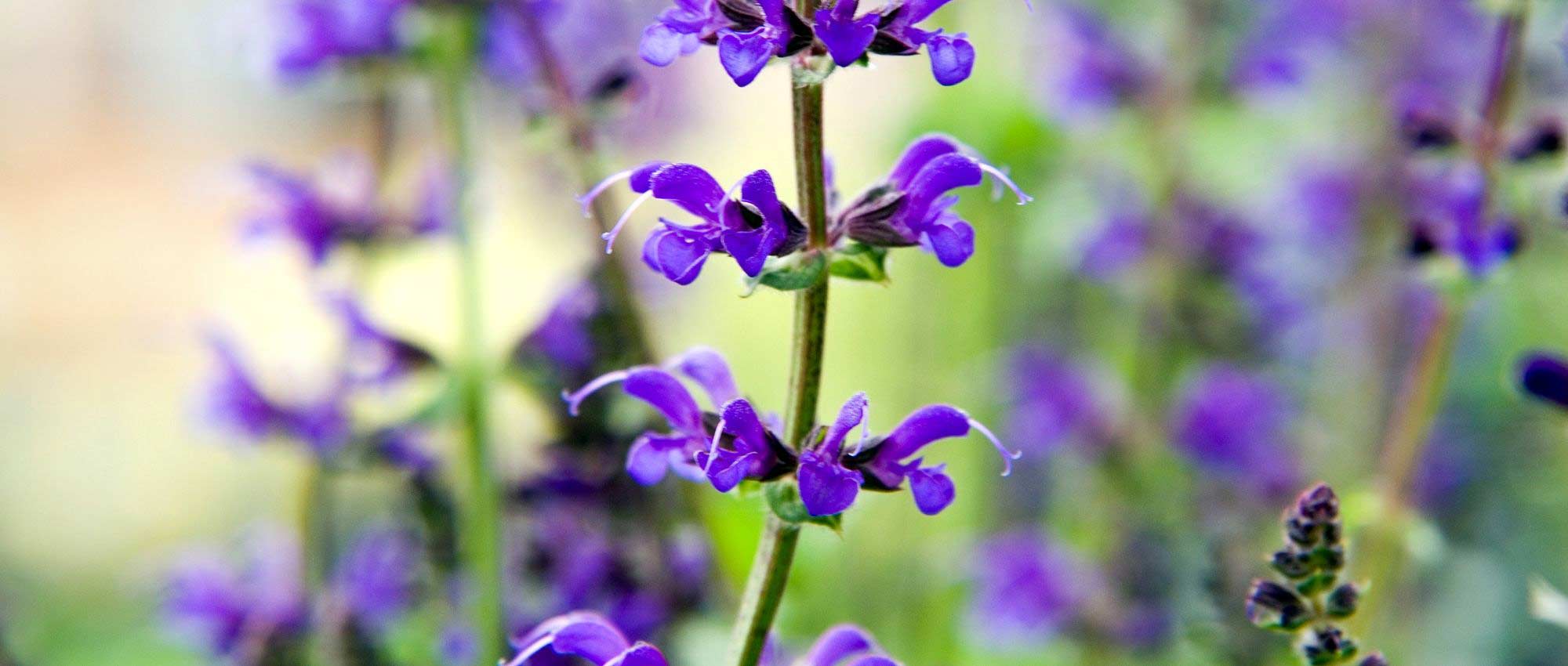
Sages: which varieties to choose?
Depending on your situation and preferences
Contents
With nearly 1,000 species and many horticultural varieties, sages form a highly diverse group of plants. Common sage, prized in cooking, is one of the best known, but there is also a multitude of ornamental varieties that fit easily into gardens, in perennial beds. They generally produce colourful flowers (blue, violet, white, pink, red, yellow…), grouped in spikes, and aromatic foliage. Most prefer sun and fairly dry soil, although there are also varieties for moist soil or shade.
Choosing among all these species and varieties can sometimes be difficult. You can choose according to your situation, your garden’s exposure, nature of your soil, but also according to your preferences!
Here are some pointers and tips to help you see things more clearly and find ideal sage for your garden!
Choosing sage according to soil and exposure
-
In full sun, in rather dry, free-draining soil
Most salvias thrive in sun, in free-draining, relatively dry soil. To flourish they need plenty of light and dislike winter damp. This is the case, for example, of common sage (Salvia officinalis), but also of Salvia nemorosa, Salvia argentea, Salvia pratensis…
You can pair them with other plants that enjoy similar conditions: Verbascum, Nepeta, euphorbias, Eryngium, Stipa… Advantage of this type of garden is that it requires very little maintenance!
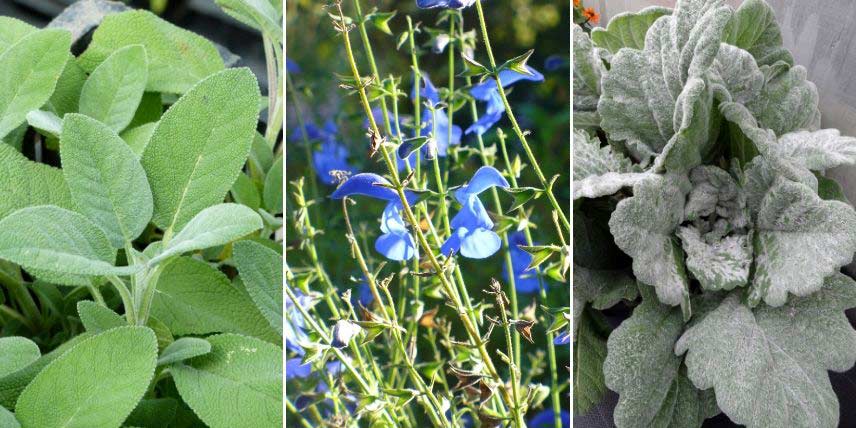
Salvia officinalis ‘Berggarten’ / Salvia patens (photo Scott Zona) / Salvia argentea ‘Artemis’
-
In shade
Although rarer, some salvias prefer shade. These include Salvia glutinosa, which bears handsome yellow flowers. Ideal for bringing light into a woodland garden! It occurs naturally in forests in France.
You can also enjoy Salvia omeiana, a somewhat rarer species that also produces yellow flowers. It favours fresh, humus-bearing, fertile substrates.
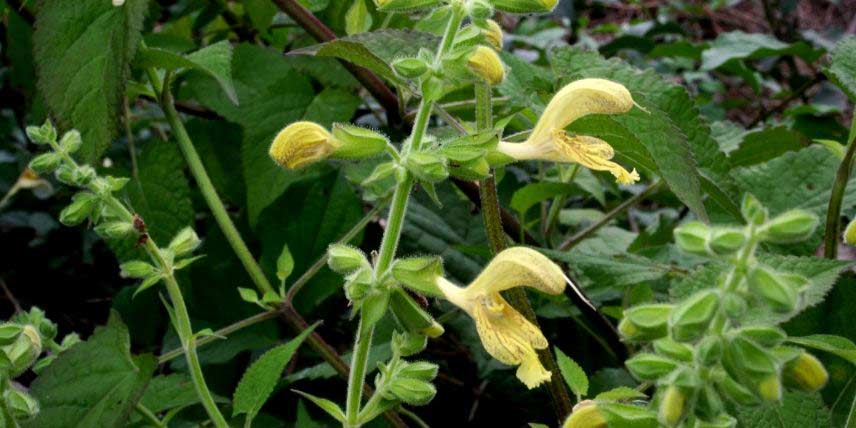
Salvia glutinosa (photo Enrico Blasutto)
-
In fresh, even wet soil
If soil is rather wet, we recommend Salvia uliginosa, marsh sage. It is a magnificent species, with long, airy flowering stems bearing soft blue flowers.
If soil is fresh but not waterlogged, consider Salvia involucrata or Salvia glutinosa.
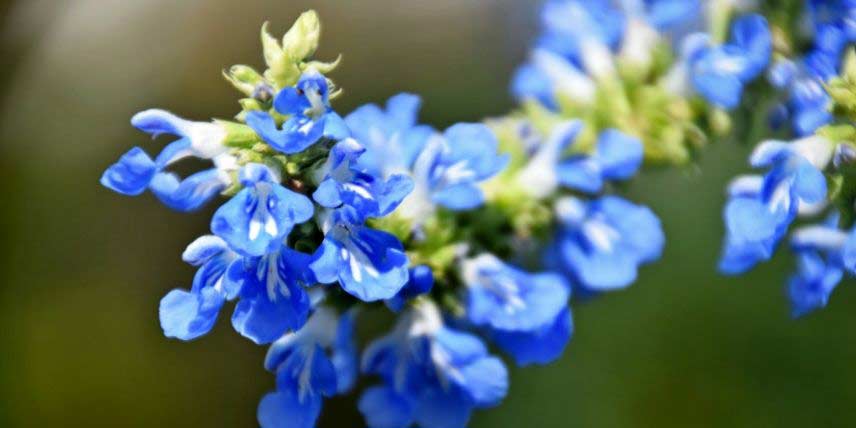
Salvia uliginosa (photo Krzysztof Golik)
-
In a rockery
Certain varieties are particularly suited to rockeries! They grow in very free-draining, stony soils and need little earth to develop their roots. This is especially true of Salvia caespitosa, Salvia jurisicii and Salvia pachyphylla. Likewise, you can use common sage to create a rockery of aromatic and medicinal plants, for example lavender, thyme, rosemary, verbena, mugwort, santolina, hyssop, etc.
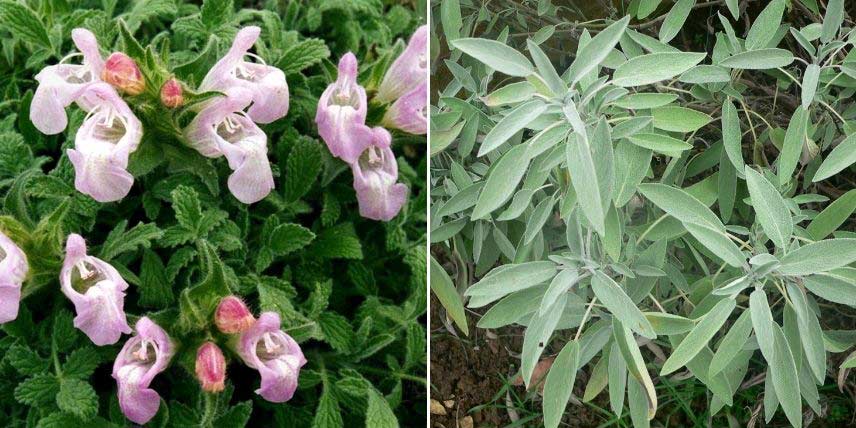
Salvia caespitosa (photo Ghislain118) / Salvia officinalis (photo David Monniaux)
Choosing a sage by its cold hardiness
Hardiness of sages varies greatly! The hardiest varieties can be grown as perennials in borders. They will thrive for several years. Less hardy ones are better grown as annuals, or protected from cold by bringing them under cover for winter. Other species have medium hardiness: Salvia uliginosa, Salvia microphylla, Salvia greggii… They can be planted outdoors in regions with a mild climate.
-
Hardiest sages
The sages Salvia nemorosa, Salvia pratensis, Salvia sclarea and Salvia officinalis are fully hardy. They can be planted outdoors without problem, even in regions with a relatively cool climate. They can withstand at least down to −15 °C, perhaps lower. This also applies to Salvia argentea, which displays attractive silvery foliage.
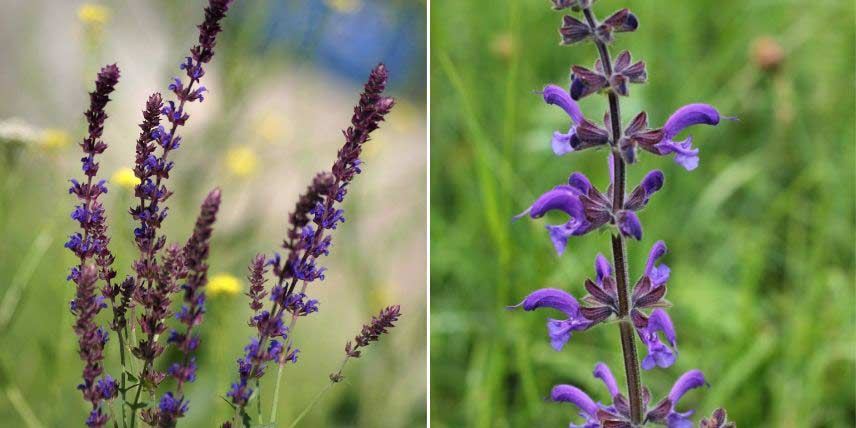
Salvia nemorosa (photo Rolf Engstrand) / Salvia pratensis (photo Lubaer)
-
Less hardy ones, to protect from cold or to grow as annuals
Other ornamental sages do not benefit from such hardiness. They are therefore usually grown as annuals in regions with a cool climate. They can also be brought under cover for winter, or left planted outdoors if you live in an area not subject to frost.
This is the case for sages Salvia splendens, Salvia elegans, Salvia farinacea, Salvia patens, Salvia coccinea, Salvia guaranitica… Most produce a brilliant, very vivid flowering. They are striking for their colours and create a superb effect in summer borders. They are perennial in their countries of origin, but in a cool climate they are usually grown as annuals. In the garden, we recommend planting them in sun in well-draining soil.
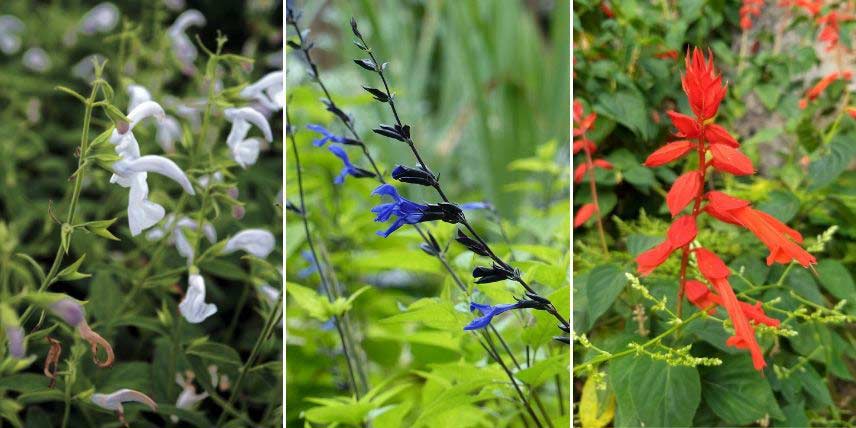
Salvia patens ‘White Trophy’ / Salvia guaranitica ‘Black and Blue’ / Salvia splendens (photo Renjusplace)
Discover other Salvia - Sage
View all →Available in 2 sizes
Available in 2 sizes
Available in 1 sizes
Available in 1 sizes
Available in 2 sizes
Available in 2 sizes
Available in 1 sizes
Available in 1 sizes
Available in 2 sizes
Available in 2 sizes
Choosing a sage to suit your garden style
-
To create a natural-style garden
Sages are plants that integrate well into country-style and naturalistic borders. Choose, for example, meadow sage, Salvia pratensis. It produces long flowering stems bearing blue flowers. An airy, light flowering! Pair it with grasses, campanulate plants, knautias, burnets, Cirsium…
You can also opt for Salvia uliginosa, which thrives in cool or even damp soils.
Feel free to create in your garden a natural meadow area, which you can highlight with more formal edges or paths of short grass meadow mown regularly. This will create a superb contrast of form.
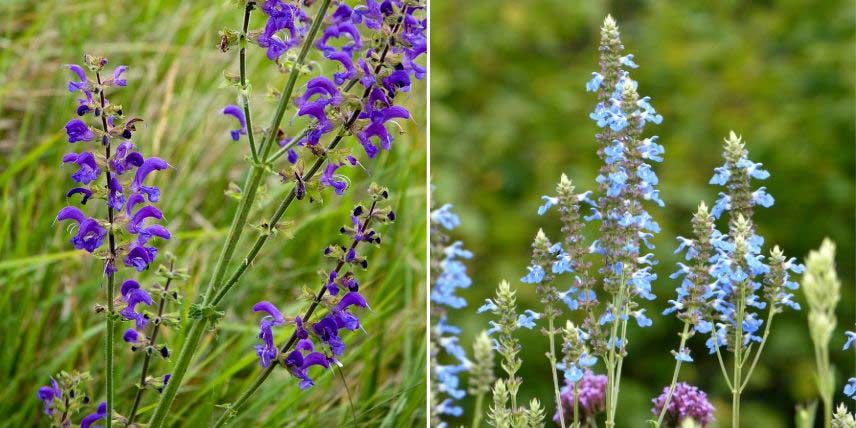
Salvia pratensis (photo Olivier Pichard) / Salvia uliginosa
-
For a dazzling flowering display
Some sages are remarkable for colour of their flowering! To create a dazzling border, try Salvia splendens, with dense spikes made up of bright red flowers. You can also choose Salvia coccinea, with more airy flowers but equally a beautiful bright red. Both species can find their place in an exotic-style garden, or in a summer border in warm tones. For a somewhat softer style, discover pink flowers of Salvia involucrata ‘Bethelii’. For an intense, deep flowering, opt for Salvia guaranitica ‘Black and Blue’, which offers dark blue flowers borne on black sepals. For an impressive mass effect, choose Salvia nemorosa. They are very floriferous, offering a multitude of floral spikes, often blue, purple or white.
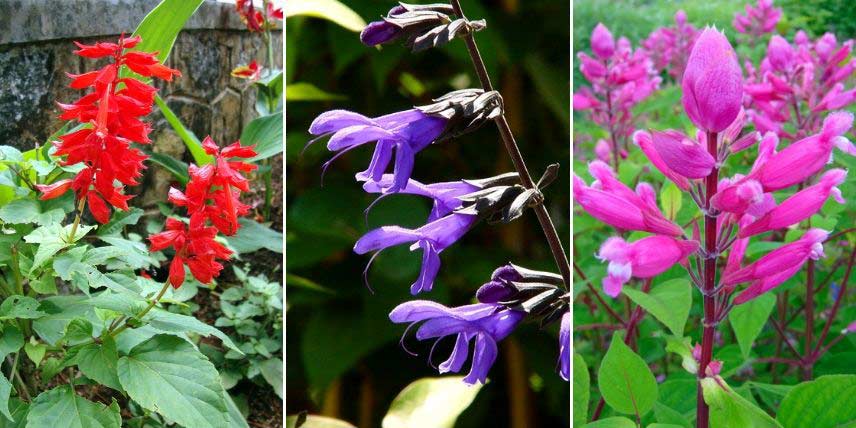
Salvia splendens (photo Prenn) / Salvia guaranitica ‘Black and Blue’ / Salvia involucrata ‘Bethelii’
-
For colourful, decorative foliage
Sages can also stand out through hues of their foliage. Thus, Salvia officinalis ‘Tricolor’ bears green-grey leaves, marginate with cream-white and flushed purple–pink on young shoots. Variety Salvia ‘Icterina’, offers green leaves variegated with golden yellow, making it really luminous! ‘Golden Delicious’ is also appreciated, with green-yellow leaves. Silver sage, Salvia argentea, is interesting for its large, grey, downy foliage. If a darker, purplish tone is desired, opt for Salvia officinalis ‘Purpurascens’.
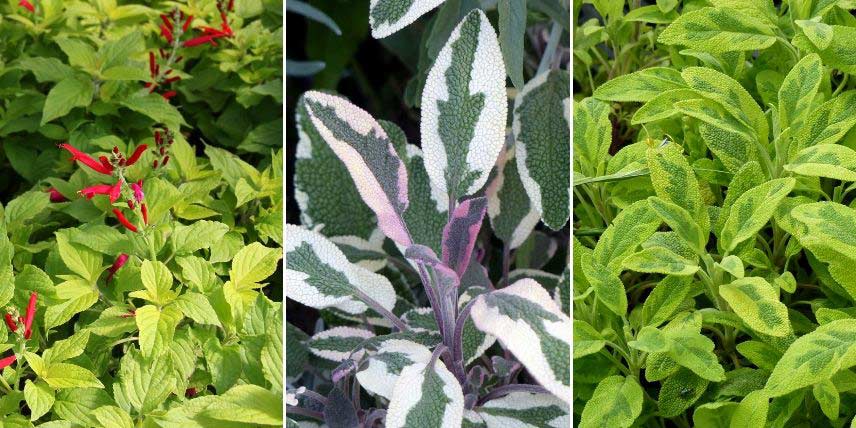
Salvia elegans ‘Golden Delicious’ / Salvia officinalis ‘Tricolor’ / Salvia officinalis ‘Icterina’
-
For aromatic foliage
Sages are of course much appreciated for aromatic foliage! Best known is common sage, very fragrant and camphorous. Leaves can be harvested, dried and used in cooking or as an infusion. It also has many medicinal properties (tonic, stimulant, antiseptic, antispasmodic…).
Other sages are also interesting for their aromas. Discover Salvia elegans and Salvia rutilans, with pineapple-scented perfume, as well as Salvia discolor, with blackcurrant scent. Finally, for an aniseed scent, discover Salvia guaranitica.
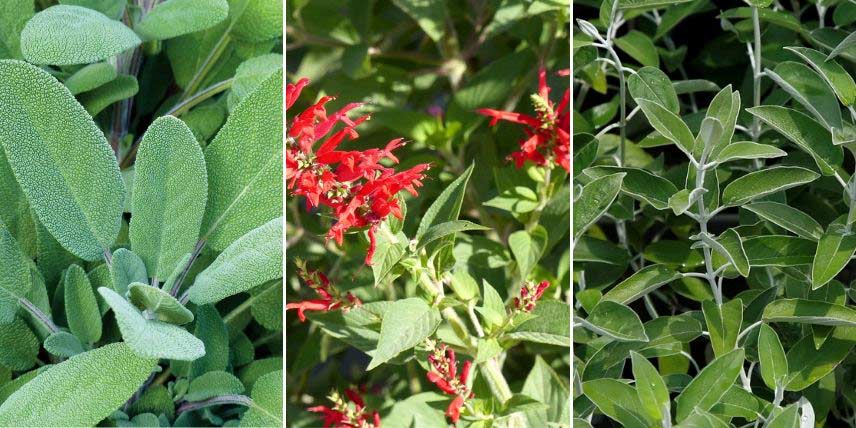
Salvia officinalis ‘Grower’s Friend’ / Salvia elegans / Salvia discolor (photo David J. Stang)
- Subscribe!
- Contents
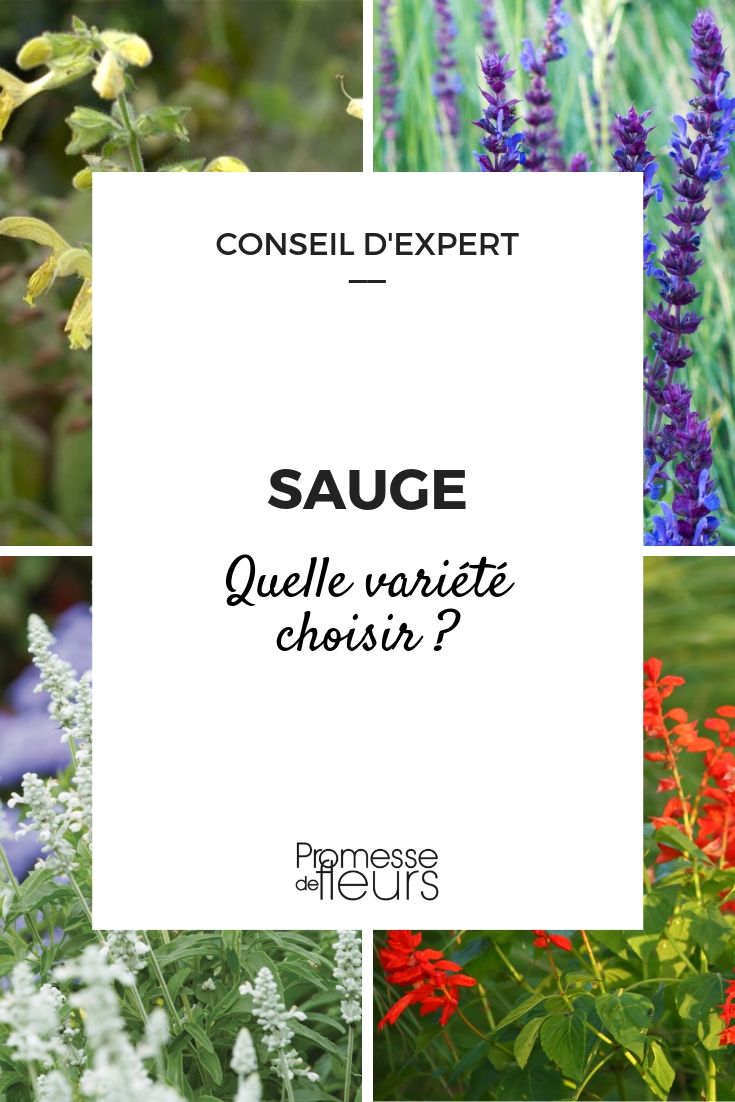































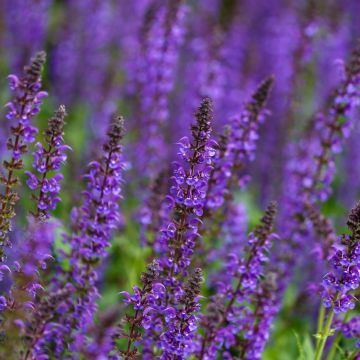
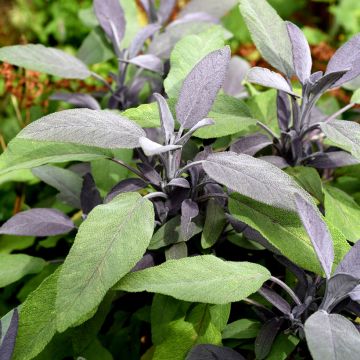
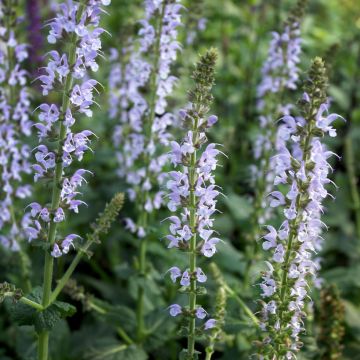
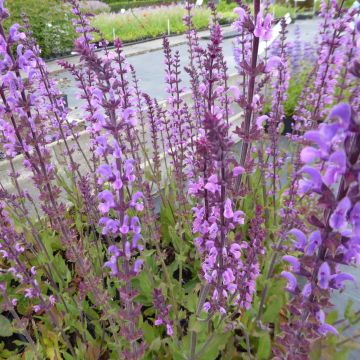
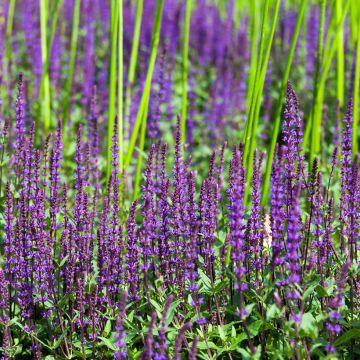
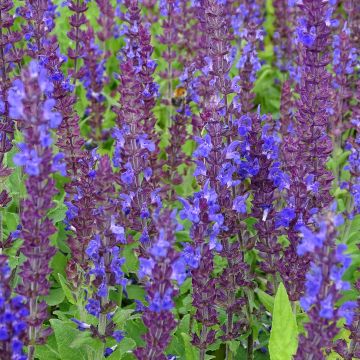
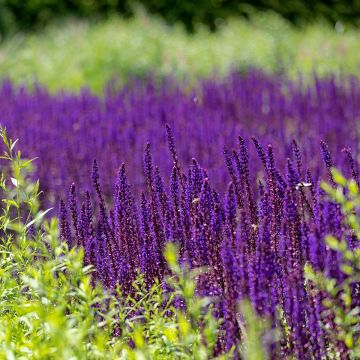
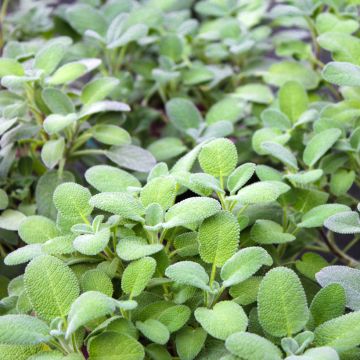
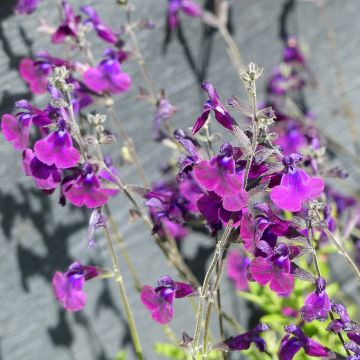
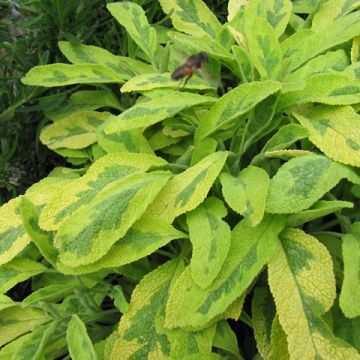
Comments